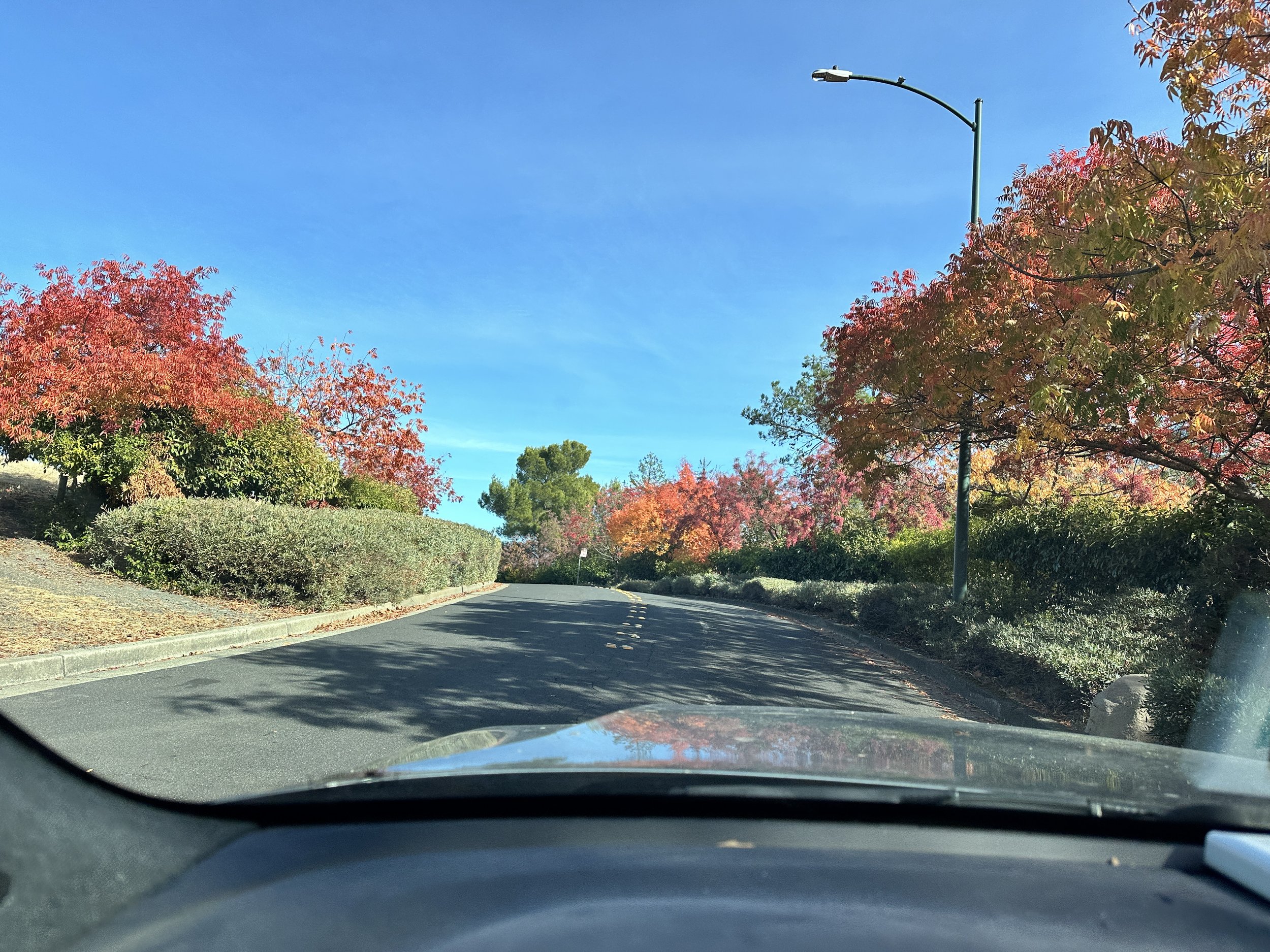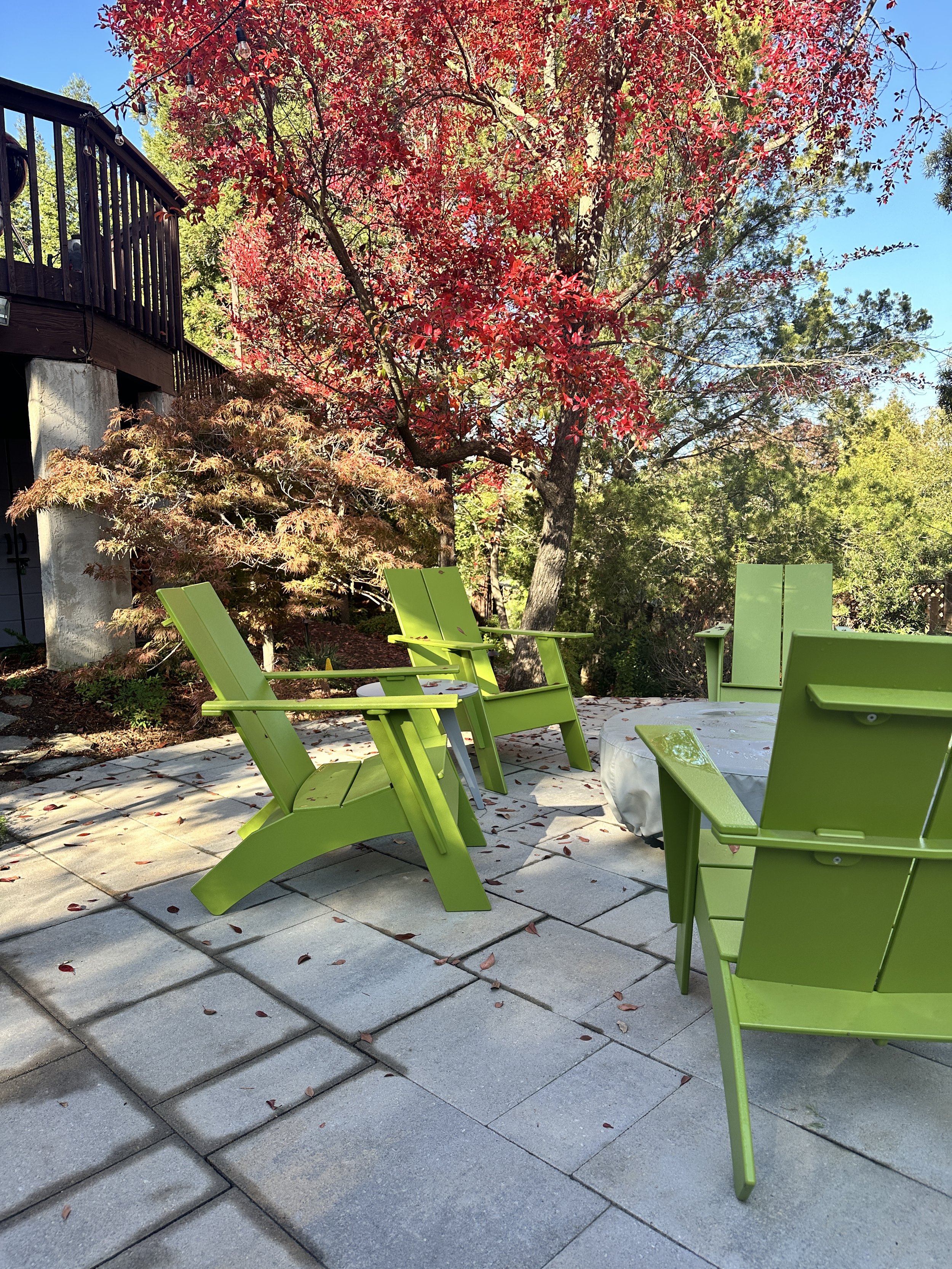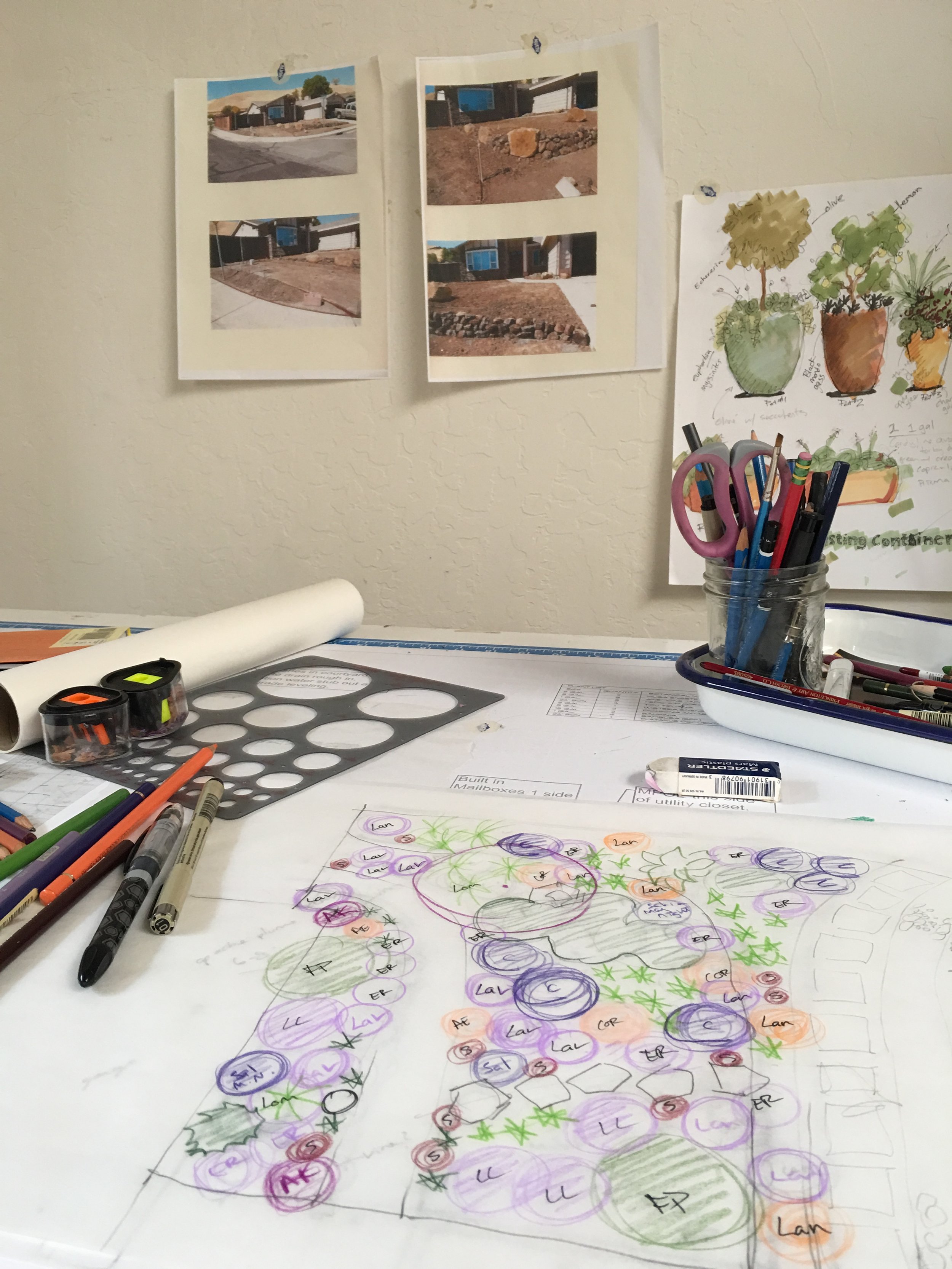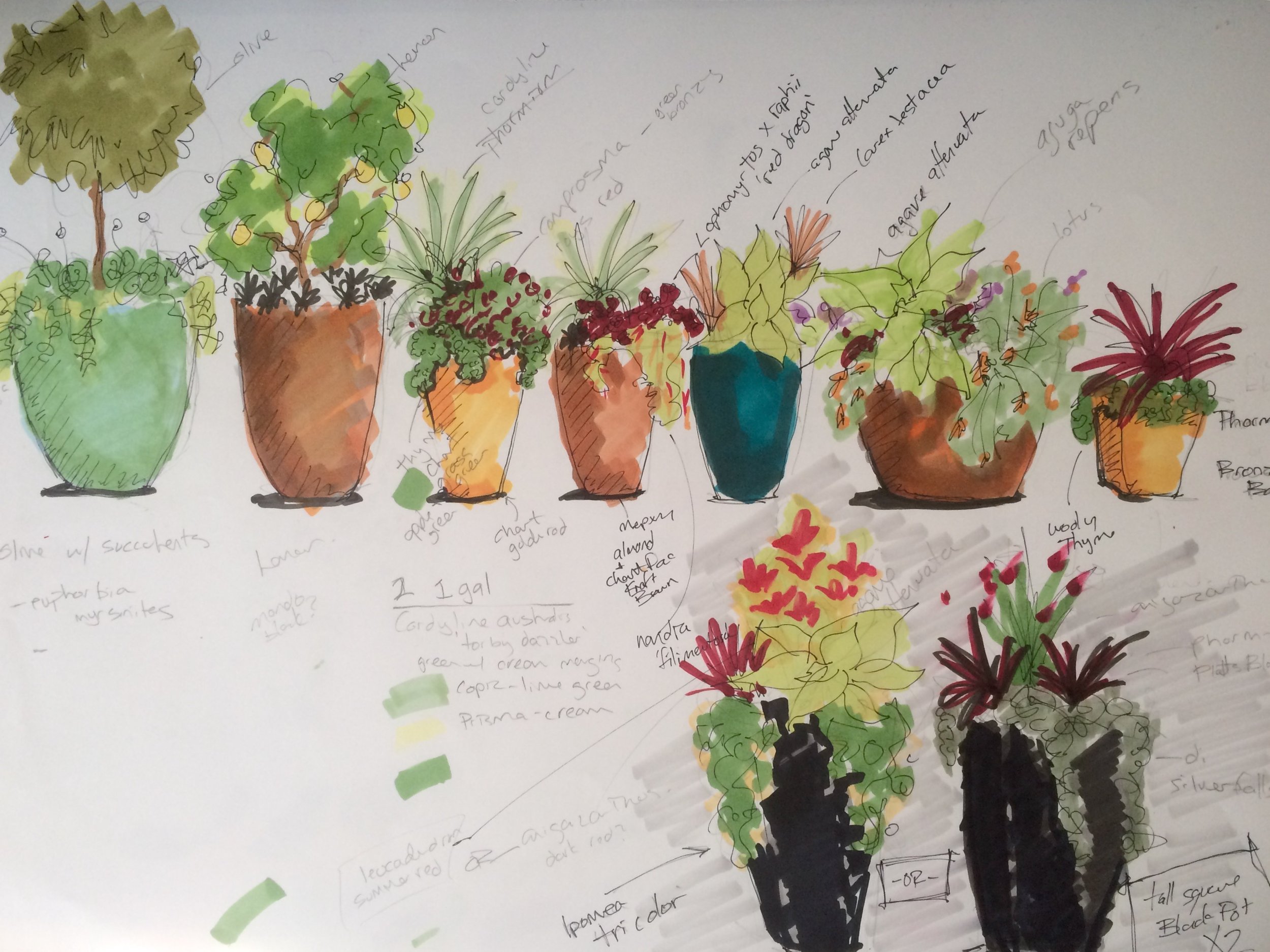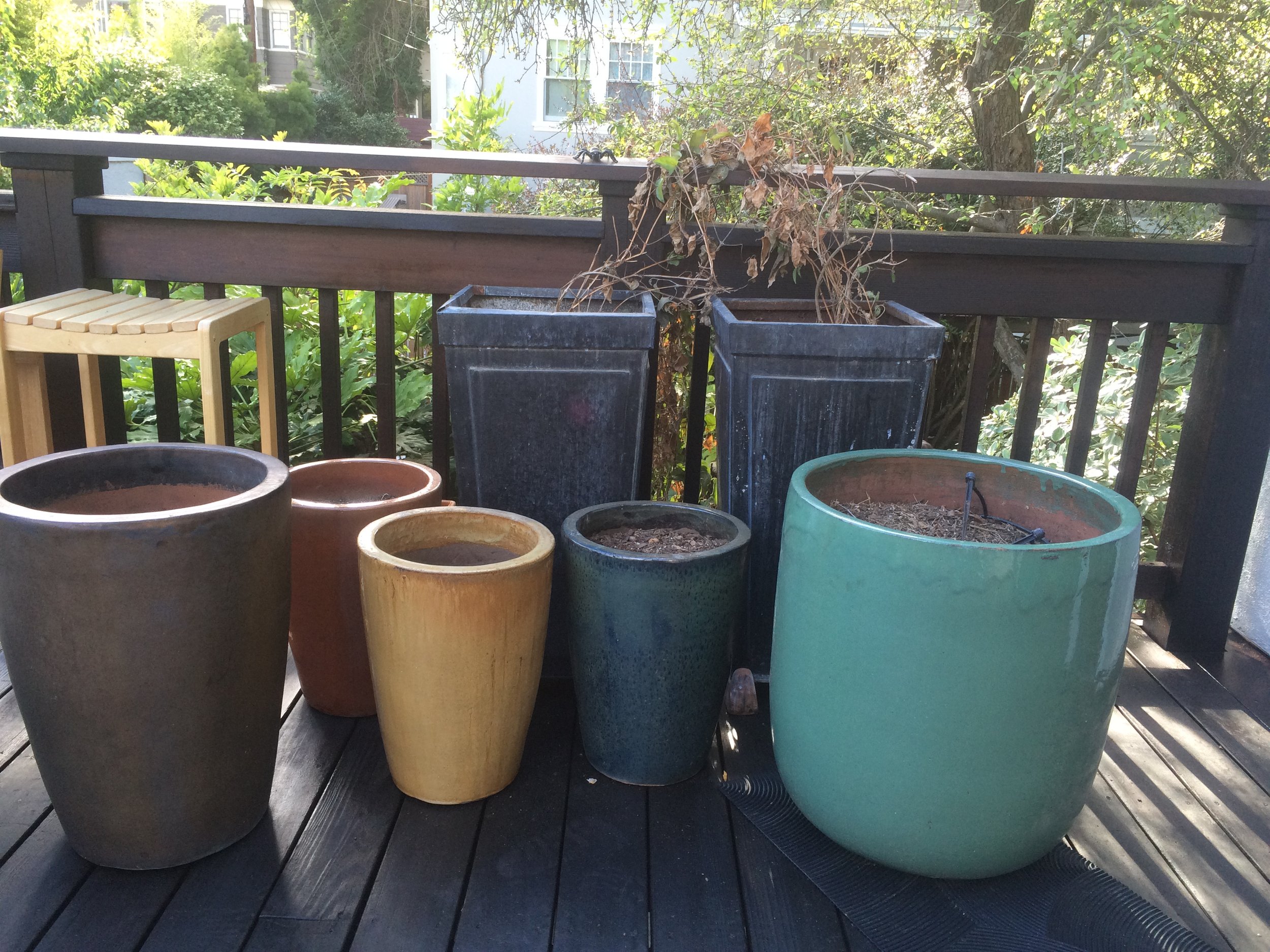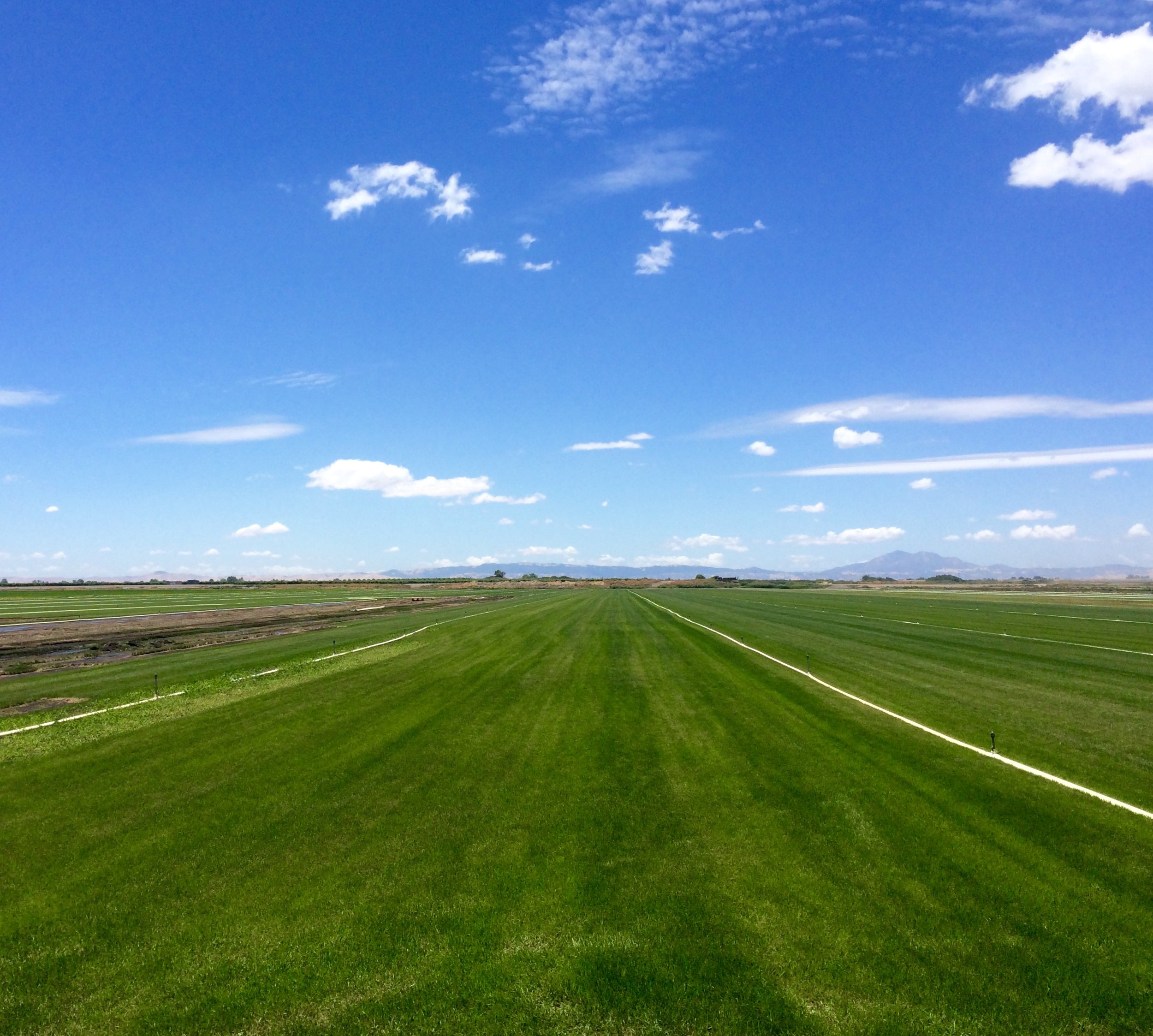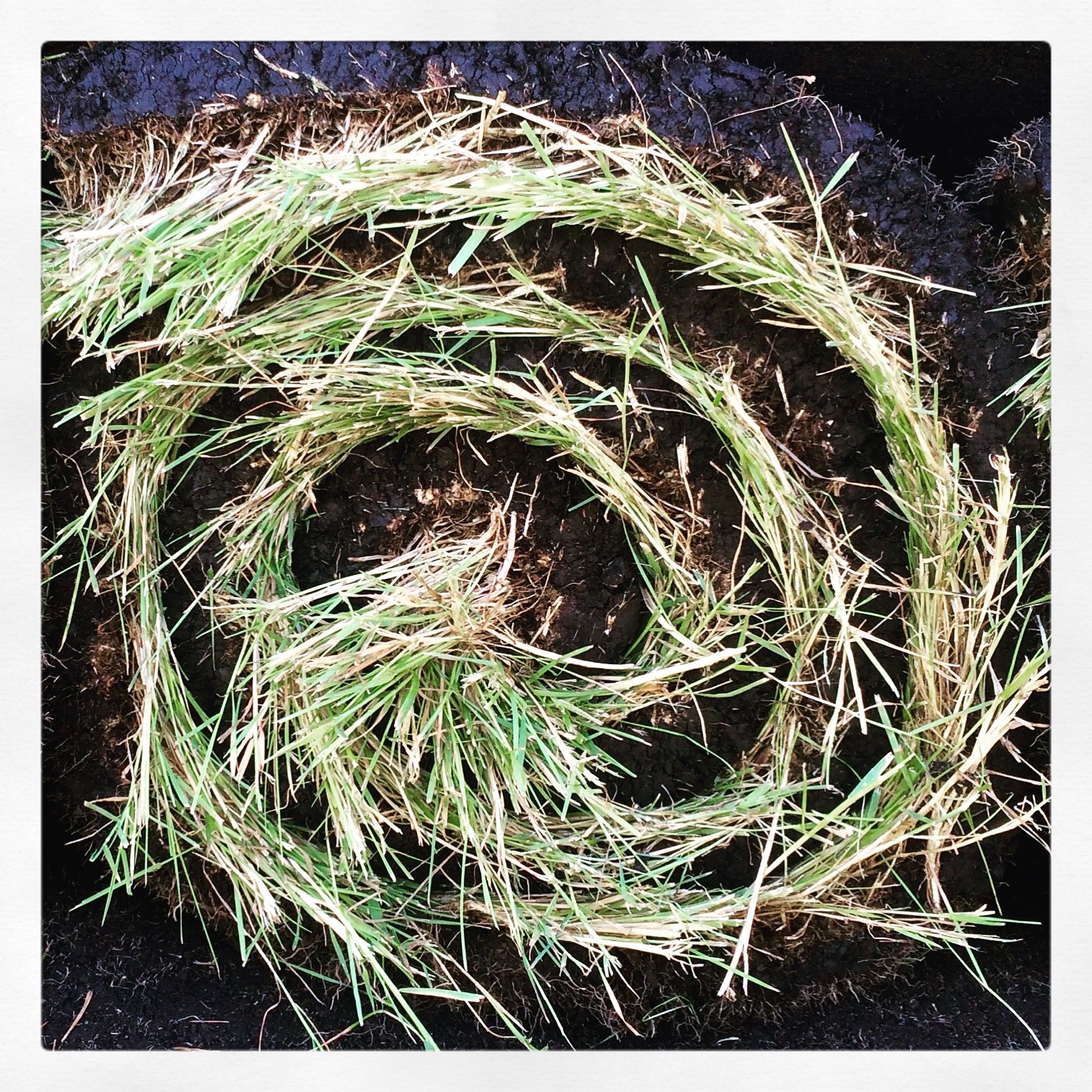I grew up mostly in the south in place without a lot of fall color. It got cold but the trees were mostly tall pine trees. They always seemed kind of depressing and dour. but I did like braiding the needles when I was little.
The Bay Area is not exactly know for fall color either. But there are several trees that can really bring it! Every fall I think, oh yeah I should document what trees are doing what right now and that time has finally come! This thought often occurs to me as I am driving through a particularly colorful street. And, yes, I did stop in the middle of the street to get this shot.
Street lined with colorful orange, red, and yellow Pistacia chinensis trees in the fall.
Pistacia chinensis - Chinese Pistache is a great tree for a streetscape or a residential setting. It doesn’t get too big, grows at a decent rate, provides a nice dappled shade and this amazing fall color. Here you can see an example of a 24” Box Keith Davey specimen at the nursery.
Lagerstroemia indica x fauriei 'Muskogee' is a nice crape myrtle that does well in this area and has gorgeous fall color.
Also consider this non native Buckeye - the Aesculus Early Glow. See some better pics here.
Next we have the Liriodendron tulipifera. This tree is in the magnolia family and has a really cool flower! I feel like I don’t actually see this tree very often. It does get HUGE soft may be that it is just too big even for the larger suburban neighborhoods in the East Bay. It is really pretty though!
Nyssa silvatica - Black Gum tree. This is another great tree for fall color. I’ve never spec’ed this tree but every time I see it I wonder why. Here is one in the background of this lovely patio at one of our projects.
In the nursery you can see this one has some set fruits. I don’t think it is a super messy tree though.
There are a million different Prunus varieties. When I first moved here the Prunus leaves fallen in the streets all yellow and red and spotty madame take up watercolors and sketchbooking. I don’t have the patience to figure out which ones these two are but I love how the leaves look intermingled on the ground!
Okay, one more. This Cercis is just looking very lovely with it's yellow leaves spread out under it!
All the Acers and Cornus trees have great fall color too.

